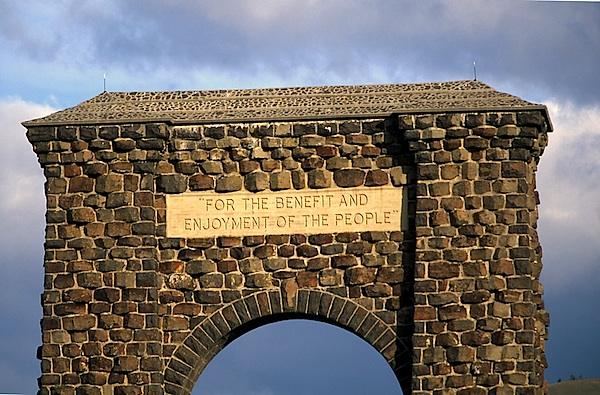
Officials at The Pew Charitable Trusts are opposed to Interior Secretary Ryan Zinke's proposal to use surge-pricing techniques in a bid to whittle away at the estimated $11-$12 billion maintenance backlog facing the National Park Service/NPS
The National Park Service should not move to surge-pricing techniques at 17 parks in a bid to address the park system's maintenance backlog, but look at options such as charging international visitors more and moving to daily entrance fees instead of weekly, according to officials at The Pew Charitable Trusts working to wipe out the backlog.
"Congress ... is ultimately responsible to ensure that the agency has the resources necessary to fulfill this mission: proper maintenance of infrastructure is an integral part of this mission," Marcia Argust, director of Pew's Restore America's Parks campaign. " Many of the National Park System’s 28,000 buildings, 12,500 miles of roads, 18,000 miles of trails, 3,000 utility systems, and thousands of parking lots, waterfronts, marinas, and campgrounds facilitate safe access, preservation of our nation’s history, recreation opportunities, and protection of natural and cultural resources."
A bit later in her letter to acting National Park Service Director Mike Reynolds she added that, "The multi-billion dollar park maintenance backlog represents a huge challenge, and it is appropriate that additional solutions be considered to keep deferred maintenance from escalating in the future."
In opposing Interior Secretary Ryan Zinke's proposal to more than double weekly entrance fees at parks such as Yellowstone, Grand Canyon, and Acadia, Ms. Argust said the ramifications of such a move need to be seriously considered.
"...in parks that are popular day destinations—Mt. Rainer National Park (NP) near Seattle, Rocky Mountain NP outside of Denver, and Shenandoah NP near Washington, DC—would a $70 pass deter day visitors? This could result in lost opportunity for new visitors to enjoy our parks, lost income to NPS, as well as lost income to local communities that depend on park visitors for their economic livelihood," she wrote in commenting on Mr. Zinke's proposal.
Pew recommends the following changes or improvements to the existing fee collection system, which may have the benefit of maintaining visitor access and providing more NPS revenue via smaller increased fees across a greater number of park sites:
1. Fully utilize NPS’ current four-tier fee structure;
2. Increase online pass purchases and the use of entrance-fee collection technology;
3. Consider a daily fee in lieu of a weekly fee;
4. Increase the price of the America the Beautiful annual pass; and 5. Consider charging international visitors a higher fee for the America the Beautiful annual pass.
The secretary described his proposal, to more than double the entrance fee for a week at the 17 parks, including Yellowstone, Yosemite, Acadia, and Shenandoah, as a way to combat the estimated $11 billion maintenance backlog across the National Park System. But it quickly drew condemnation from members of both sides of the aisle in Congress, and more than 65,000 comments have been received already on the proposal.
Under the proposal, peak-season entrance fees would be established at Arches, Bryce Canyon, Canyonlands, Denali, Glacier, Grand Canyon, Grand Teton, Olympic, Sequoia and Kings Canyon (two parks treated as one under this proposal), Yellowstone, Yosemite, and Zion national parks with peak season starting on May 1, 2018; in Acadia, Mount Rainier, Rocky Mountain, and Shenandoah starting on June 1, 2018; and in Joshua Tree National Park as soon as practicable in 2018.
The peak season for each park would include its busiest contiguous five-month period of visitation. The peak season entrance fee for a seven-day pass to each park would be $70 per private, non-commercial vehicle, $50 per motorcycle, and $30 per person on bike or foot. A park-specific annual pass for any of the 17 parks would be available for $75.
The cost of the annual America the Beautiful-The National Parks and Federal Recreational Lands Pass, which provides entrance to all federal lands, including all national parks for a one-year period, would remain $80.
Public comments on the secretary's surge-pricing proposal are being taken through December 22 at this site.



Comments
Here is the simple solution. Take all the money we now spend "fighting climate change" and put it into the National Parks. That solves BOTH problems.
Interesting proposals but only 4 & 5 would raise revenues and possibly control crowds. The other three would likely have the opposite effect.
How is the Park Service going to enforce charging foreigners more, ask for ID from everyone who enters? Is this even legal? Will they borrow staff from the Border Patrol in the south west? I could just imagine the lines to get into Arches backing up to Monticello UT.
Also, I suspenct the single day payment would raise the most howls of any of the proposals especially in a place like Yellowstone.
One benefit of the plan proposed by Zinke is that it would encourage people to visit the parks during the off season.